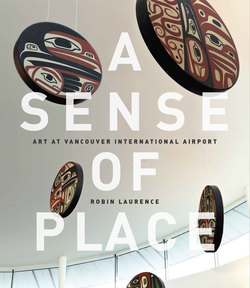Читать книгу A Sense of Place - Robin Laurence - Страница 12
Оглавлениеwith its architectural design, has captivated millions of travellers who pass through the airport each year, garnered numerous awards, inspired wide media coverage and served as a model to other airports around the world.
In the late 1980s, while YVR was still being managed by Transport Canada, modest efforts were made to enliven the facility through the display of contemporary aboriginal art from British Columbia. However, the commissioning and display of such art had yet to become a priority at what was considered “a very functional and in some ways undersized airport.” 1 Things changed dramatically in 1992 when Vancouver Airport Authority took over the management of YVR and plans were made for an ambitious and visually arresting expansion and renovation of the passenger terminals. At that time, a commitment was made to direct up to one percent of building capital expenditures to the commissioning of art for placement throughout YVR, and to fully consolidating these works with the overall architectural plan.
The mission statement for art and archi-tecture in the newly expanded airport called for the celebration of the natural beauty and cultural heritage of British Columbia. Both could be used to tell the story of this place — to convey to visitors the unique character of the province the airport serves. Essential to YVR’s vision was and is the presentation
of outstanding works — from figurative sculptures, silkscreen prints and copper panels to transformation masks, ceremonial paddles and totem poles — by contemporary First Nations artists from British Columbia. The YVR Art Foundation was established in 1993. This charitable organization fosters the development of B.C. First Nations art and artists through scholarships and other programs. As a further commitment to YVR’s art program, a curator was hired to oversee the growing collection, which now numbers over two hundred works and is one of the most significant of its kind in the world.
In the mid-1990s, the creation of the Musqueam Welcome Area and the purchase and installation of Bill Reid’s acclaimed bronze sculpture The Spirit of Haida Gwaii: The Jade Canoe dramatically launched YVR’s comprehensive art program. The additions powerfully identified the airport with the most distinctive visual art created in British Columbia. But who are the people whose cultural presence has contributed so much to the story of this place?
Isolated by mountains, forests and long, wet winters on the narrow, broken margin of the sea, the first peoples of the North Pacific Coast of North America evolved, over many thousands of years, sophisticated fishing, hunting and gathering technologies and complex systems of religious belief, social
xiii
